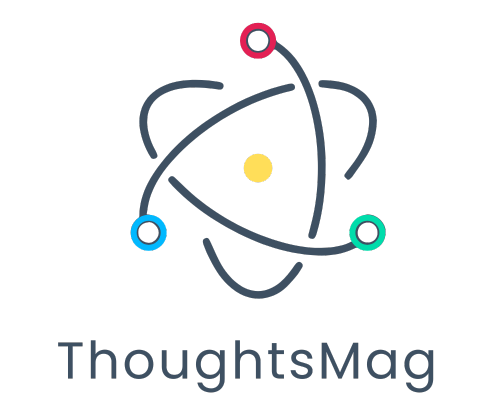Transforming Your Lead Generation Process with Gen AI and Data-Driven Demand Generation
Today, companies are automating their advertising, enhancing lead capture, and accelerating the conversion process using Generative AI (Gen AI) accompanied by data-driven demand generation. The perpetual changes in consumer behavior renders older marketing strategies obsolete for effective customer engagement. To remain competitive and fulfill these expectations, companies need to implement new approaches that are more efficient, personalized, data-centric, and agile. This article analyzes the impacts of Gen AI and data-centric demand generation on the lead capturing paradigm shift modernizing the marketer’s arsenal strategically for optimized business advancement.
The Challenges of Traditional Lead Generation
Before diving into how Gen AI and data-driven demand generation transform the lead generation process, it’s essential to understand the challenges associated with traditional methods. Traditional lead generation techniques, such as cold calling, generic email blasts, and mass advertising campaigns, are becoming increasingly ineffective. These methods often fail to engage modern consumers who demand relevant, timely, and personalized content. Here are some of the key limitations:
- Time-Consuming Processes: Traditional lead generation often involves manual tasks such as data collection, prospect research, and lead qualification. These processes are time-consuming and prone to human error.
- Generic Messaging: Mass emails and advertising campaigns typically use one-size-fits-all messaging, which doesn’t resonate with individual prospects. This approach leads to lower engagement rates and missed opportunities.
- Lack of Personalization: Without the use of data, traditional methods struggle to provide personalized experiences for potential leads, which are crucial for building trust and nurturing relationships.
- Inefficient Lead Qualification: Identifying and prioritizing leads manually can result in missed opportunities and wasted resources. It’s challenging to determine which leads are genuinely interested and ready to convert.
As a result, businesses that rely solely on traditional lead generation methods often see slower growth, lower conversion rates, and higher customer acquisition costs.
Enter Gen AI: The Future of Lead Generation
Generative AI (Gen AI) has revolutionized the way businesses approach lead generation. Unlike traditional AI, which primarily analyzes data and makes predictions based on patterns, Gen AI goes a step further by creating original content and generating insights that can be used to optimize marketing strategies. This technology harnesses the power of machine learning and natural language processing to produce highly personalized, data-driven content and automate key tasks throughout the lead generation process.
Here’s how Gen AI can significantly improve your lead generation efforts:
1. Hyper-Personalized Content Creation
With Gen AI, businesses can generate highly personalized content for each lead, including emails, landing pages, and social media ads. By analyzing customer behavior, preferences, and past interactions with the brand, Gen AI can craft messages that are tailored to each individual, improving engagement and increasing the likelihood of conversion.
For example, AI tools can analyze a prospect’s browsing history and create customized email subject lines and content that resonate with their specific interests. This level of personalization helps companies build stronger relationships with their leads and move them through the sales funnel more effectively.
2. Predictive Lead Scoring
Gen AI uses predictive analytics to determine the likelihood of a lead converting into a paying customer. By analyzing historical data and behavior patterns, AI models can assign a lead score based on how likely they are to take the next step in the buying process. This predictive lead scoring allows marketing and sales teams to prioritize high-value leads and focus their efforts on prospects that are more likely to convert.
This eliminates the need for manual lead qualification, allowing your team to spend more time on high-potential opportunities and reducing the risk of wasting resources on unqualified leads.
3. Automated Follow-Ups and Lead Nurturing
One of the key benefits of Gen AI is its ability to automate lead nurturing. Rather than manually sending follow-up emails or reminders, Gen AI can automatically send personalized follow-up messages based on a lead’s actions or interactions with your website, social media pages, or email campaigns. These AI-driven sequences are customized for each lead, ensuring that they receive timely, relevant content that keeps them engaged and moving forward in the sales process.
Automated nurturing allows businesses to stay in constant contact with leads, even when sales teams are unavailable, ensuring no opportunity is lost.
4. 24/7 AI-Powered Chatbots
AI-powered chatbots can engage with leads on your website or social media channels at any time of day or night. These chatbots can answer basic questions, make suggestions for goods, and even set up meetings with your sales team.By engaging with leads instantly, businesses can reduce the chances of losing prospects due to slow response times.
In addition, chatbots can collect valuable data on leads, including their preferences, pain points, and intent, which can be used to refine your marketing strategies and improve lead targeting.
Data-Driven Demand Generation: Building a Stronger Foundation
While Gen AI aims to improve lead generation through increased personalization and automation, data-driven demand generation is more about creating awareness and interest long before a prospect enters the lead funnel. Businesses can inform their marketing efforts through data at each step of the demand generation process, making the campaigns more effective and relevant.
Here’s how data-driven demand generation can enhance your marketing strategy:
1. Better Targeting with Data Insights
Data-driven demand generation starts with intricate knowledge of your audience. Businesses can glean valuable information about their customers from social media, website analytics, and even existing CRM data. This allows them to identify key buyer personas and categorize them based on behavior, demographics, and even personal preferences. Marketers can then craft campaigns aimed at specific segments within the audience and position highly relevant content that resonates with them.
For instance, if your data suggests that a certain segment of your audience is interested in a specific feature of your product, you can focus your messaging to that area, and in turn, generate more qualified leads.
2. Identifying Emerging Trends
Demand Analytics enables organizations to identify emerging trends and customer shifts with great precision. These technologies can help businesses optimize their strategies and workflows, almost in real-time through content creation, by monitoring customer activity and market movements.
For example, if the data suggests that a particular challenge is becoming increasingly salient for your customers, you can develop content around that challenge and market your solution accordingly.
3. Optimizing Campaign Performance
Marketing Services could be externally focused like analyzing big data to understand customer needs and focus on continuous improvement. Open rates, CTR, conversion rates, customer interactions and a variety of other KPIs are lagging indicators that show whether a campaign is performing successfully or not, where marketers have options to make adjustments based on the results and take appropriate actions. If there is poor customer turnout, then the first idea is taken as an optimization where marketers are left with a narrow range of options (data driven decisions).
Analytics such as A/B testing, heatmaps, content, targeting and personalization algorithms should serve the purpose of tailoring each campaign to optimize every ROI resulted from each campaign.
4. Improved ROI
Among many value propositions from data-driven, demand generation, and marketing in general, the capability to drive lowest marketing spend is the only possible solution to have ever fragmented business goals and join the success of their functionality into one. By marketing resources with the right audience the message engagement and conversion rates are superseded. Achieving an effective utilisation of marketing resources leads to greater ROI.
Take a data driven approach and allocate value more strategically to less utilized budget channels.
How to Combine Gen AI and Data-Driven Strategies for Maximum Impact
Integrating Gen AI with data-driven demand generation is particularly effective when used together. These two strategies work in tandem to develop an automated system that eliminates mundane activities like custom-tailoring messages and elevating the quality of leads entering the funnel. Here’s how to integrate both:
1. Use Data to Inform AI Models
Begin by providing AI algorithms with comprehensive, up-to-date customer data. Gen AI can create custom content based on how customers engage with your brand and what items of content they pay attention to.
2. Automate Campaign Execution
After the AI has generated unique personalized content for customers, automate distribution for email, social media, and website content. Automated insights will guarantee that the appropriate people receive the right messages at the right time and in the appropriate manner.
3. Measure and Optimize Performance
Utilize data to track campaign performance and establish methods for continual improvement of set goals. Gen AI offers valuable insights concerning content performance, helping you tailor messages and segmentation for greater impact.
Conclusion
Integrating Gen AI and data-driven demand generation into your demand generation process is a requirement in today’s business landscape. By employing AI and data, businesses can promote, engage, and convert leads much quicker and more effectively compared to previous years. Gen AI allows hyper-personalization, automated nurturing, and predictive lead scoring, while data driven demand generation gives a deep insight for the construction of relevant, targeted campaigns. These two technologies provide a scalable solution for businesses that wish to maximize growth, improve efficiency, customer relations, and business overall.
Embracing Generative AI and data-driven tactics today enables your company to boost lead generation, make better decisions, and lay the groundwork for long-term success.






